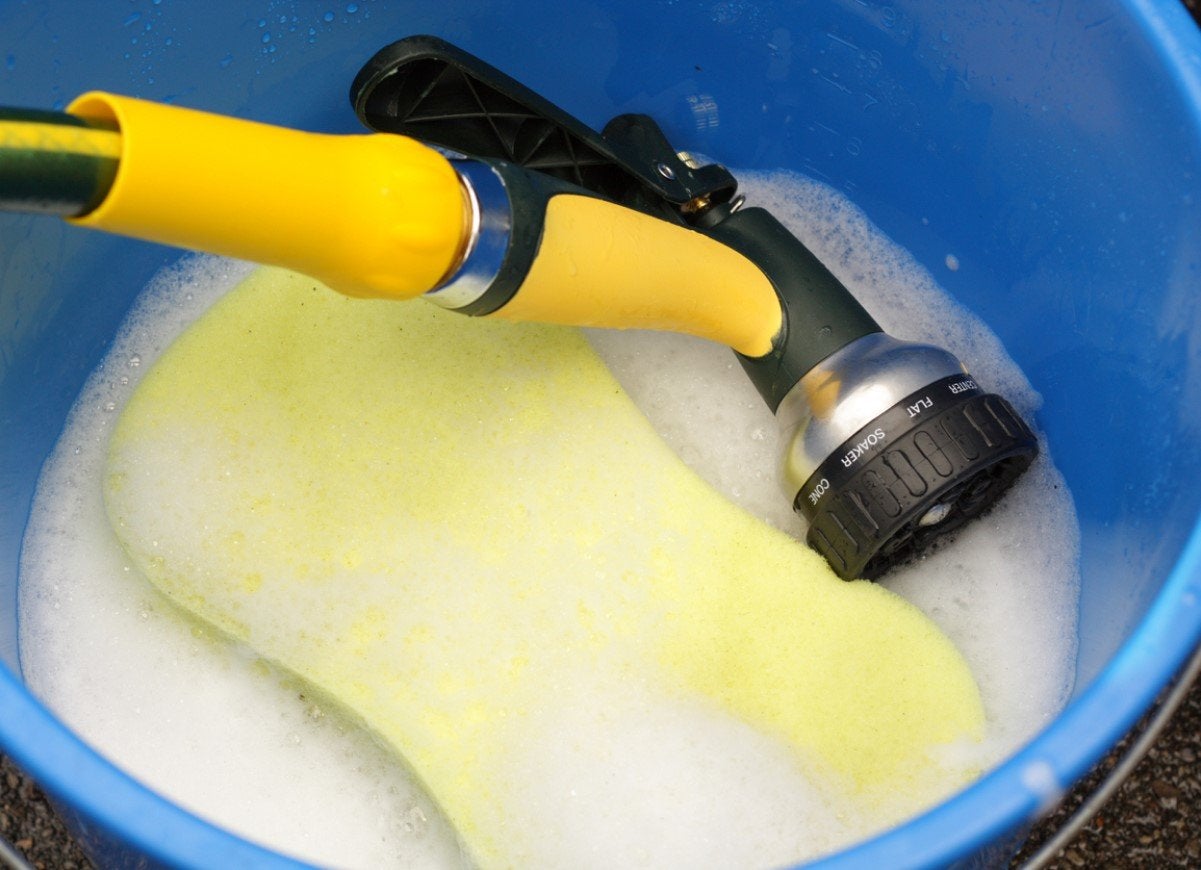We may earn revenue from the products available on this page and participate in affiliate programs. Learn More ›
Keep your durable outdoor dining chairs and tables looking top-notch.

Unlike your living room set, patio furniture can’t just sit around looking good and feeling comfy. It has to stand up to the elements, from torrential downpours to bird deposits. Though materials can range from durable exotic hardwoods to delicate wickers, all patio furniture requires routine cleaning. Using the wrong products or techniques, however, could damage your outdoor tables, chairs, and lounges. Follow these guidelines to get the job done quickly and correctly.
DON’T use a pressure washer.

Save this powerful cleaning tool for your deck. Power washing can do more harm than good to patio furniture, since the force of the water can strip the finish (particularly on wood). In most cases, a garden hose and a little elbow grease is all you need.
DO remove rust from metal furniture before cleaning.

For light amounts of rust, use sandpaper or steel wool to gently scrub it off. Start with a coarse-grit sandpaper or a wire brush to remove rust and finish off with a finer grit to smooth. For more significant rust, use an electric drill outfitted with a wire brush, or even a grinder if you have one handy.
DO use cleaning agents tailored to your furniture’s material.

Wood, wicker, metal, and plastic each demand special cleaning. Natural materials like wood and wicker call for a nourishing, oil-based soap. Colored plastic and metal furniture can be cleaning with a mild dishwashing soap. Automatic dishwashing detergent is great on white plastic furniture (just make sure to wear gloves, as this cleanser often contains bleach).
DON’T use abrasives on wicker and plastic.

While a soft-bristled brush is safe for scrubbing wood and metal surfaces, plastic and wicker call for something gentler to avoid damaging your furniture’s surface. When cleaning wicker, use a damp microfiber cloth to wipe the piece down; for plastic, use a sponge.
DO give your cleaning solution time to work.

Apply the appropriate cleaning product to the furniture and give it about 15 minutes of dwell time. Then rinse thoroughly with a garden hose—unless it’s wicker, which can warp if saturated with too much water. Wipe wicker furniture down with a damp cloth instead to remove soap.
DON’T neglect cushions.

If cushion covers can’t be zipped off and tossed in the wash, clean them by hand. First, lift loose dust or debris with your vacuum’s brush attachment. Then swish a tablespoon of dish soap in a bucket of warm water and use a sponge to scrub. Let it dwell for about 15 minutes, rinse with a hose, and blot out as much water as you can with a towel. Dry cushions thoroughly in the sun, propped up so they’re standing on end.
DO keep up with routine maintenance to make cleaning easier.

Start and end each season by giving your furniture a good deep clean, and be sure to wipe everything down after pool parties and barbecues. You may opt to use a protectant on your furniture depending on the material. Wood, for example, might do well with a coat of outdoor varnish. Metal can be lightly coated with auto wax to keep it in good shape.
DON’T forget the umbrella.

Remove the fabric from the frame of your patio umbrella, if possible, and if machine washable, follow the care tag instructions to launder. If you can’t take the fabric off, remove surface dirt with a vacuum or soft-bristled brush, then mix a solution of warm water and mild laundry detergent (about a quarter of a cup per gallon of water) and give the fabric a good scrub with a brush. Let it soak in for about 20 minutes, then rinse with a garden hose and let dry in the sun.
Fresh Furniture

With the proper care and maintenance, your patio furniture will last for many seasons.

DIY Flooring Solutions That Look Practically Professional
In search of flooring that meets the needs of the space without sacrificing style? We found solutions for 5 tricky space updates that blend aesthetics, durability, and DIY-friendly design.
